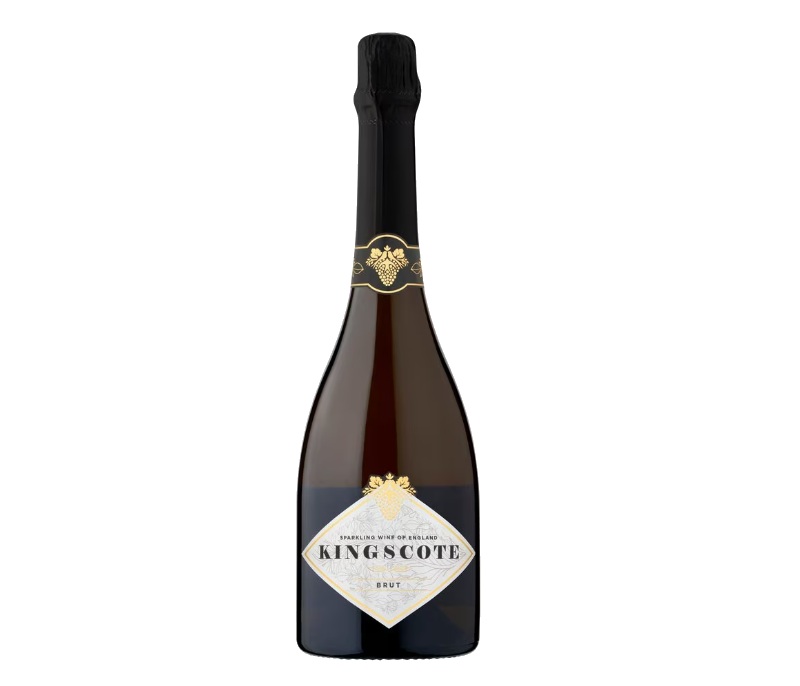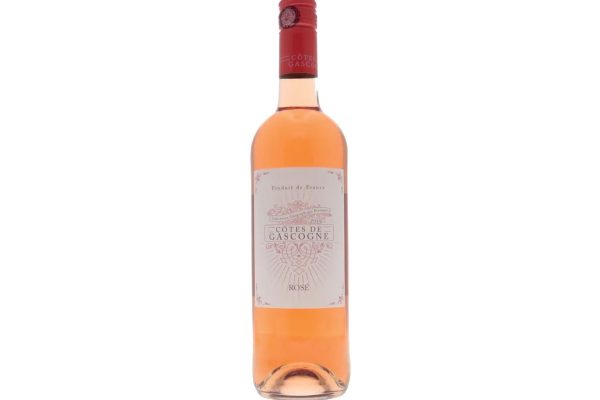
Unusually, this review of English Kingscote Sparkling begins with its price. Originally sold at £18 in Tesco, it recently became discounted to £12 and then available for a mere £9 during a special 25% off offer. But how does an Sparkling English wine, typically retailing at £20 or much more, end up at such a low price? The answer lies in the labelling and the winemaking process.
This wine is labelled as “Sparkling Wine of England” rather than “English Sparkling Wine” The difference? Kingscote is made using the Charmat method, where the second fermentation occurs quickly in a large tank rather than in the bottle, and aged, as is the case with Champagne and premium English Sparkling wines. While the Charmat method, clearly mentioned on the back label, might sound sophisticated to the uninitiated, it’s the same technique used for producing Prosecco. It’s quicker and cheaper, taking weeks rather than years.
Kingscote Sparkling is made exclusively for Tesco by the West Sussex-based Kingscote Estate & Vineyard, a producer better known for traditional-method English sparkling wines. However, Charmat-method wines have sparked some controversy. The debate centres around the impact on the reputation of English wine, which is still building its premium image. Some in the industry fear that cheaper, quicker-to-produce wines like this could undermine efforts to position English wine as a high-quality, high price, Champagne-like product. For more in-depth information on this I recommend you read the excellent book Vines in a Cold Climate, Chapter 8, ‘Fizz Wars’.
But what about the wine itself? Made from the classic Champagne grapes, Chardonnay, Pinot Noir and Pinot Meunier, Kingscote Sparkling has an ABV of 11% and is labelled as Brut, indicating a dry style, though not the driest, which would be Extra Brut. In the glass, it has a splendid rose gold colour and a unexpected cider-like aroma. On the palate, there’s a slight citrus freshness and apple flavour. It’s sweeter than a typical Brut and has a sherbet-like quality that becomes much more pronounced as it warms up.
Interestingly, the wine elicited mixed reactions from those I shared it with. Without the backstory, some were unsure what to make of it. For those familiar with English sparkling wine but not Charmat-method English wines, it was worse than expected, though the consensus was that it was acceptable at £9 but not worth the original £18 price tag.
Is it a better Prosecco? Not exactly, it’s too different. Does it compete well with Prosecco? Not really, it stands apart. The more pressing question is whether it damages the reputation of English wine. For newcomers to English wine, perhaps. It’s worth noting that Kingscote also produces traditional method wines and associating this Charmat-method product with their more prestigious offerings could be a risk to their reputation so Charmat-method is a brave move. To lower the risk, perhaps they should have used a different brand name other than Kingscote .
The broader question for the English wine industry remains: should it also embrace a different, cheaper style of sparkling wine, or focus solely on premium, Champagne-like offerings? As my wife astutely pointed out, ‘English Sparkling Wine’ might be the wrong term for traditional method wines, given the potential for confusion with products like Kingscote Sparkling. A more distinctive brand name could help preserve the hard-earned reputation of English sparkling wines.
In conclusion, Kingscote Sparkling is an intriguing product that raises important questions for the English wine industry. While it’s not a bad wine, especially at the discounted price, it highlights the ongoing tension between quality and affordability in this rapidly developing sector.













